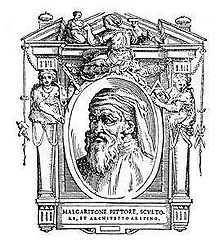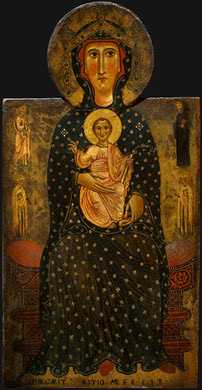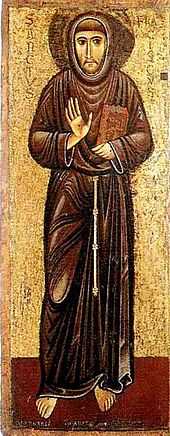Margaritone d'Arezzo


Margarito or Margaritone d'Arezzo (fl. c. 1250–1290) was an Italian painter from Arezzo.

Life
Little is known of Margaritone's life. The only documentary record of his existence dates from 1262, when he lived in Arezzo. However, a fair number of his works are known to survive; unusually for the time, most are signed. Their nature and distribution indicate that Margaritone was much in demand as an artist, both in Arezzo and throughout Tuscany. Outside Italy, his fame rests mainly on his entry in Giorgio Vasari's The Lives of the Artists.
Style
Margaritone's style is uniquely identifiable, standing as it does outside the mainstream of 13th-century Italian painting. His work has at times been dismissed as either reactionary and provincial, and indeed he was often held up by critics in the 19th century as a prime example of the barbarism perceived in late Byzantine painting. Given the lack of surviving dates, no chronology for his career has yet been created.
Paintings by Margaritone are held at the National Gallery of Art in Washington, DC, and at the National Gallery, London; in addition, a number of works may be found at sites around Arezzo.
-

Detail showing Margaritone's signature; it reads "MARGARIT___RITIO ME FECIT".
Name
Margaritone's given name was Margarito, but it was transcribed erroneously by Vasari as "Margaritone". It is by this latter form that he is usually known today.
External links
|